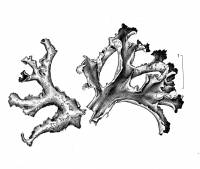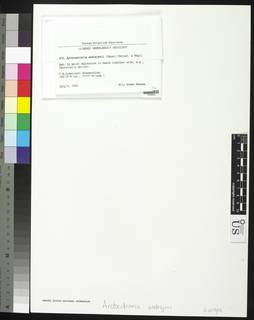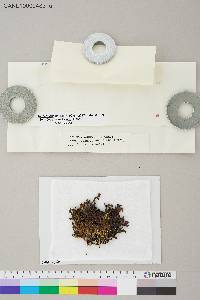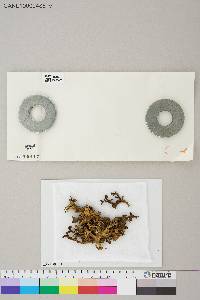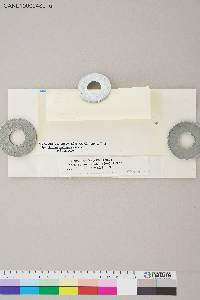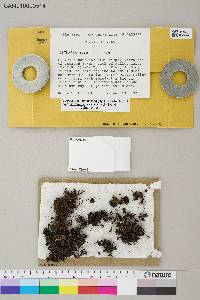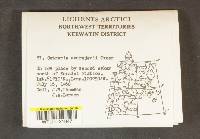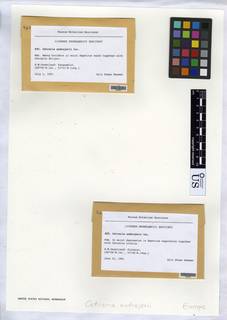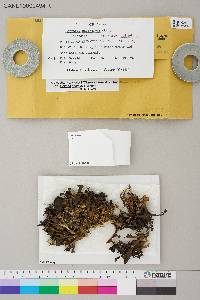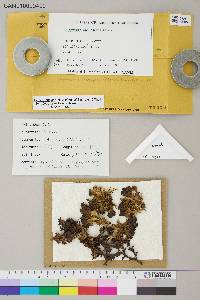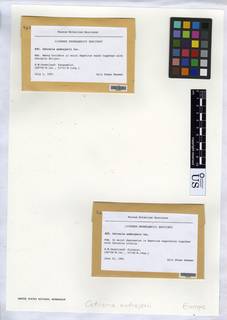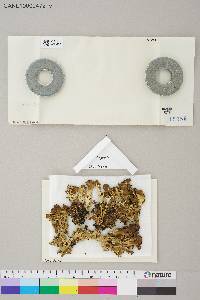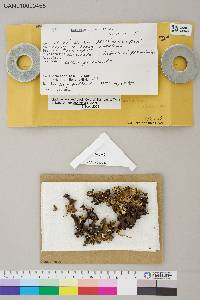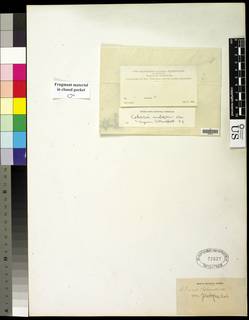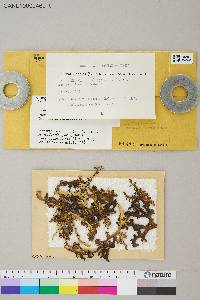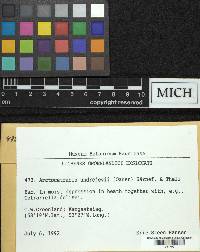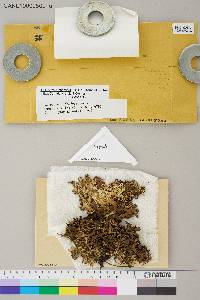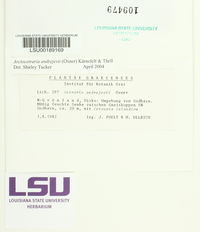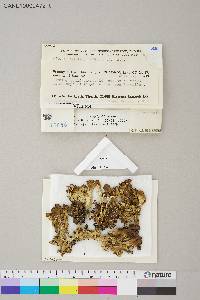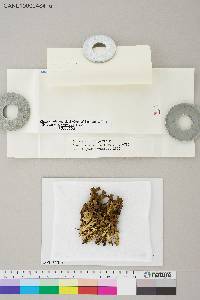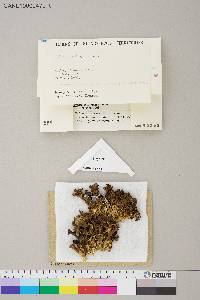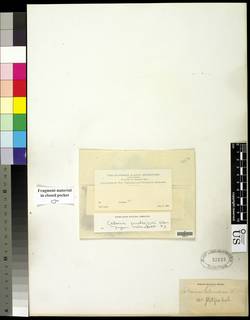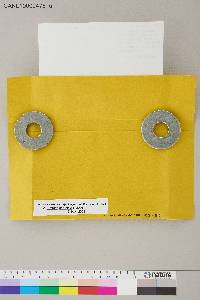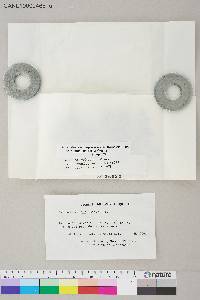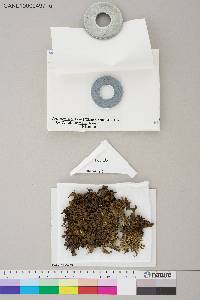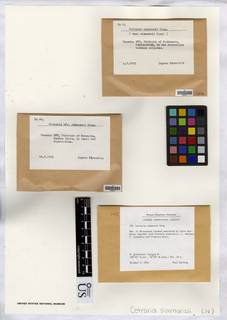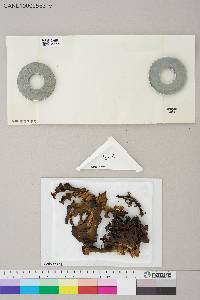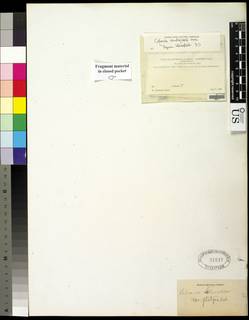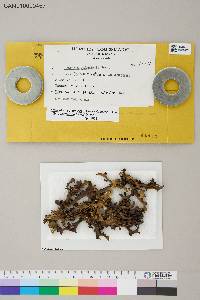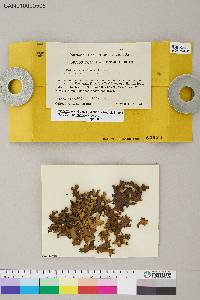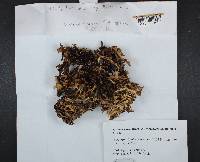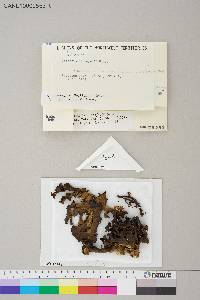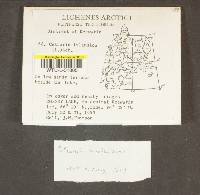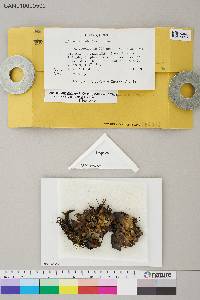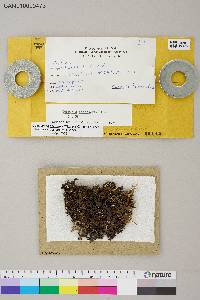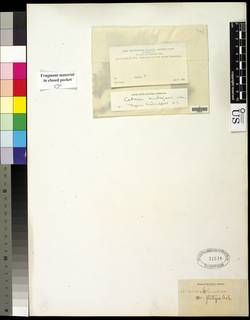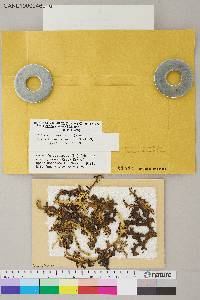
Consortium of Lichen Herbaria
- building a Global Consortium of Bryophytes and Lichens as keystones of cryptobiotic communities -
- Home
- Search
- Images
- Species Checklists
- US States: O-Z >
- US National Parks
- Central America
- South America
- US National Parks
- Southern Subpolar Region
|
|
|
|
Family: Parmeliaceae
[Cetraria andrejevii Oksner, moreCetraria simmonsii Krog] |
Thompson, J., 1997. American Arctic Lichens: The Macrolichens. Thallus fruticose forming small mats and tufts, erect, intertwined and fusing in the groups, irregularly branched, the branch tips markedly enlarged and rounded, dilating upwards, the margins partly inrolled and the thalli therefore partly canaliculate, both sides deep shining brown to chestnut brown, the dying parts paler yellowish brown, with weak pseudocyphellae; the margins lacking isidia or cilia, the small spinules with pycnidia very scant. Upper cortex prosoplectenchymatous, 25-40 μ, the outer 7-10 μ brown and the hyphae oriented parallel with the surface; medulla fairly dense, 80-125 μ, the algae in scattered glomerules; lower cortex like the upper. Apothecia rare, at the tips of lobes, the reverse wrinkled; epithecium yellowish brown; hypothecium pale, asci clavate; spores 8, hyaline, simple, ellipsoid, 8-10 x 4-5 μ. Reactions: medulla K-, C-, KC-, I-.P-. Contents: rangiformic and non-rangiformic acids. Growing on the ground in very wet places, especially with cold seepage as below late snow banks and along stream banks where there is springtime overflow, sometimes in very moist places in bogs. This species was described from Siberia and ranges across Alaska and the Northwest Territories to Greenland. It may possibly be characterized as amphi-Beringian broad ranging. In North America it is distinctly Arctic. |
Powered by Symbiota



